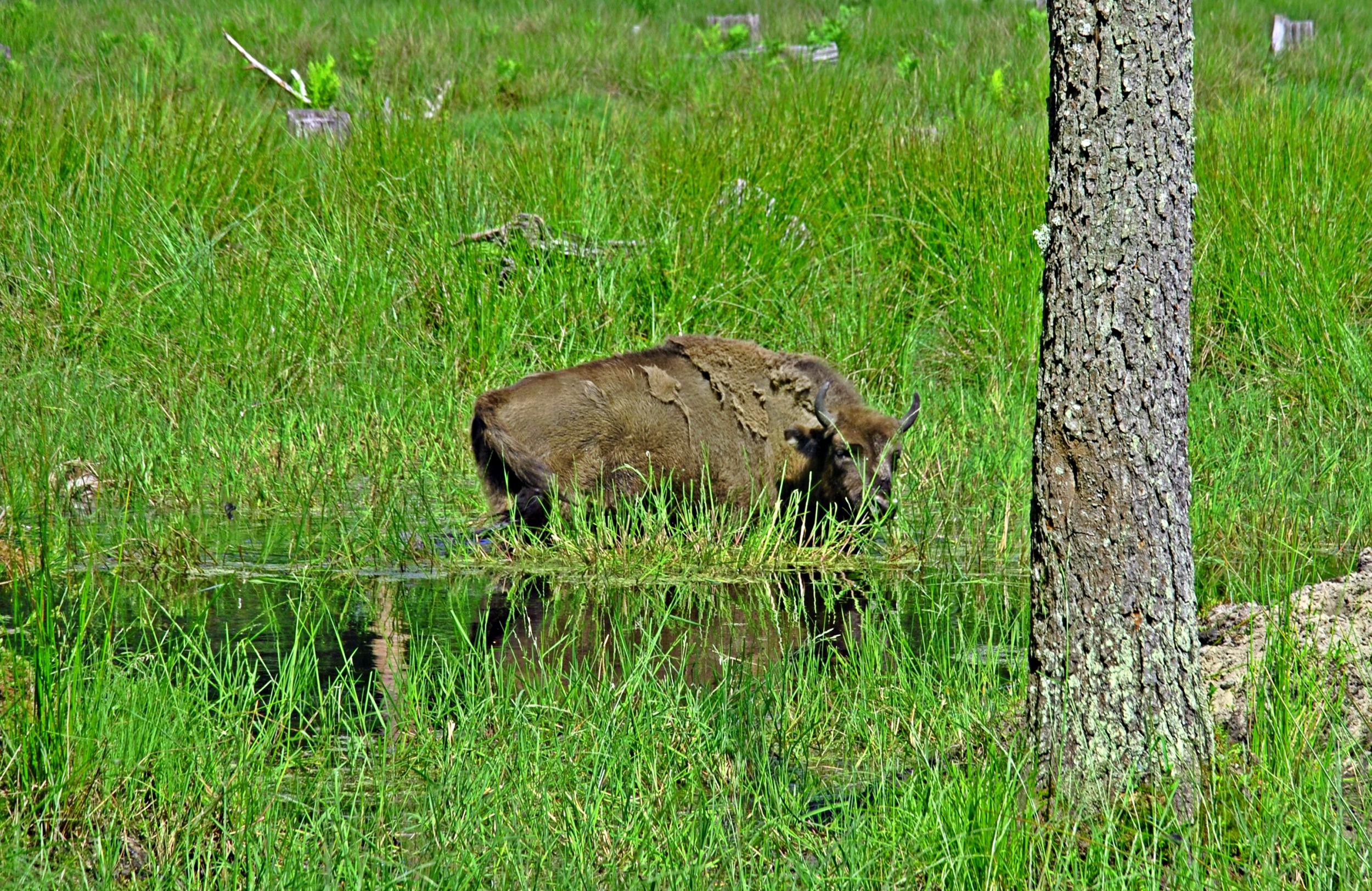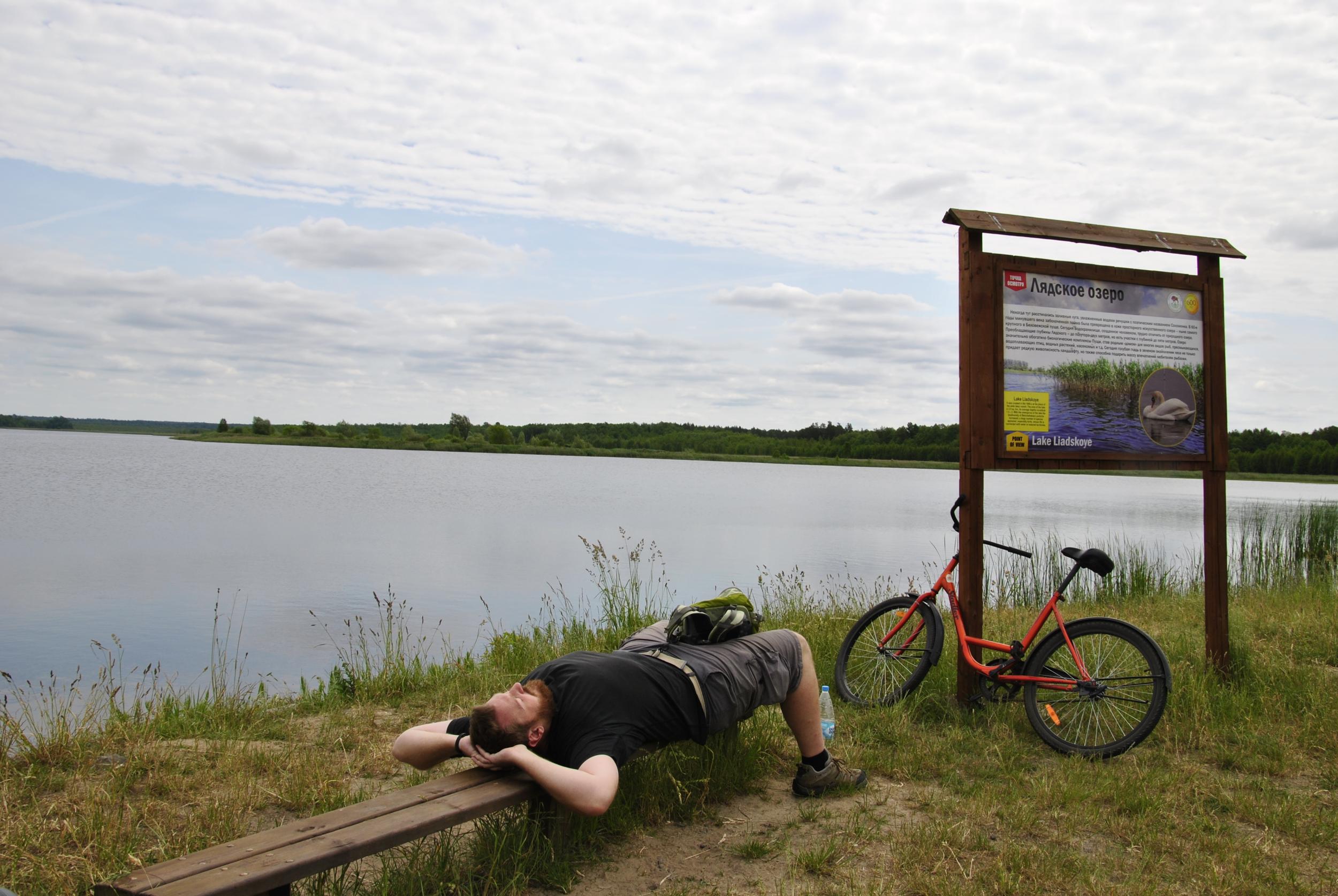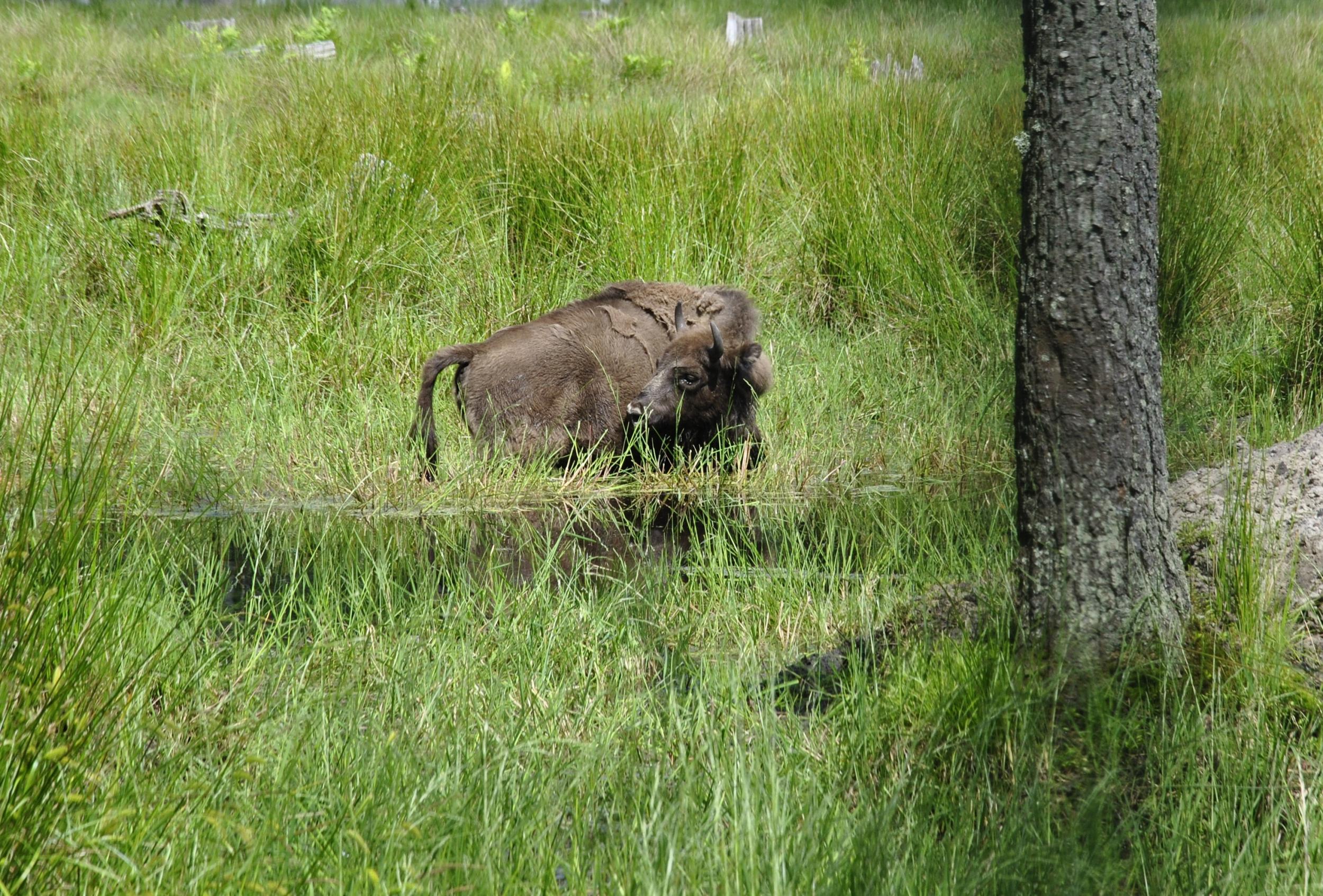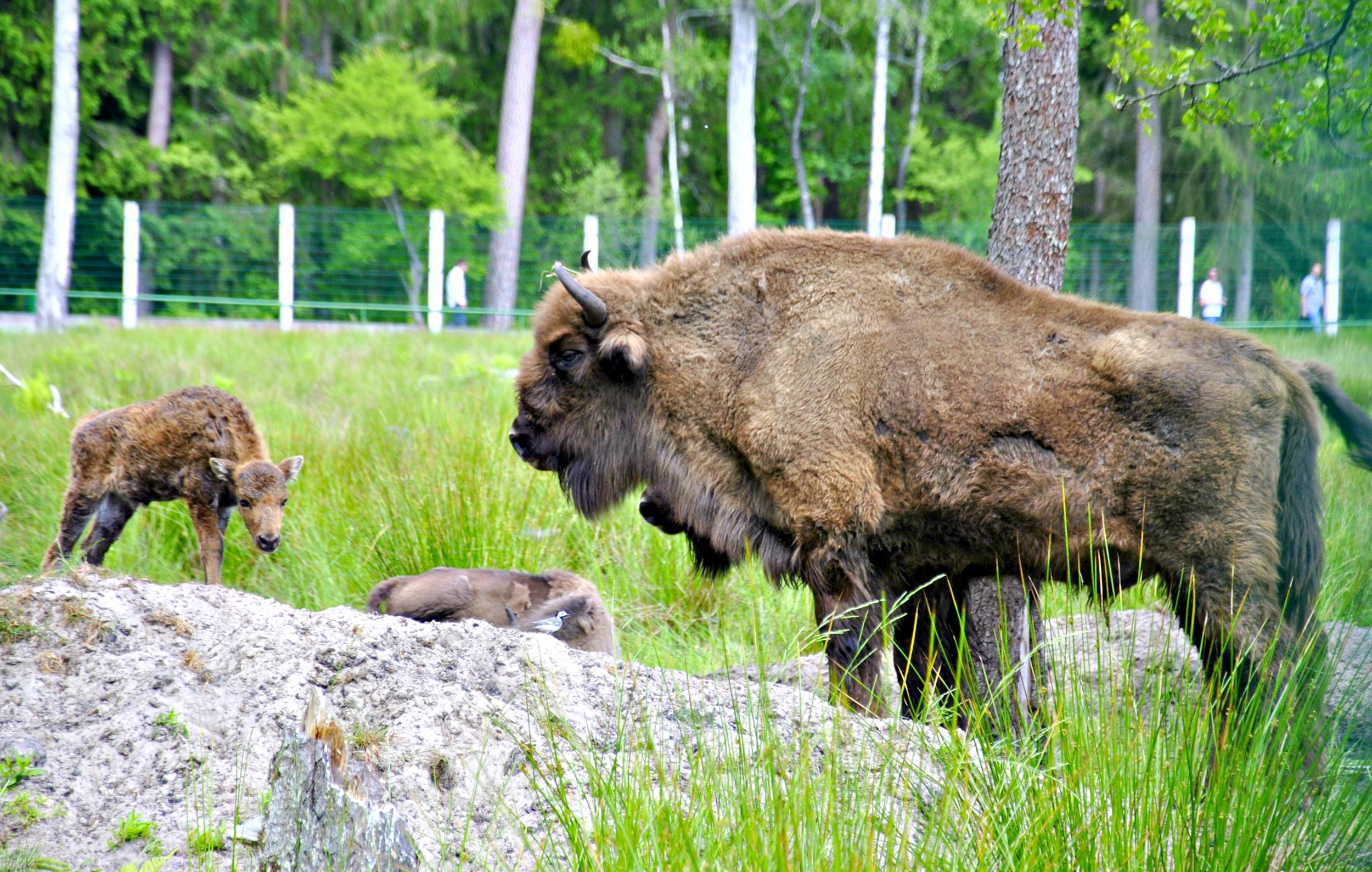The Independent's journalism is supported by our readers. When you purchase through links on our site, we may earn commission.
Belarus: Tracking bison in Europe’s last primeval forest
Joseph Reaney visits the Bialowieza nature reserve in Belarus in search of its most iconic resident

It’s early morning and I’m tiptoeing through the undergrowth. Shafts of sunlight pierce the canopy overhead, spotlighting fragments of the forest all around me. I survey them for the slightest sign of movement. This ancient habitat is home to an extraordinary array of endangered species, but I’m in pursuit of one in particular – the heaviest wild animal living on the continent, the European bison.
It wasn’t too long ago that these gentle giants – the 2,000lbs herbivore cousins of the American buffalo – roamed freely across northern Europe. However, by the start of the 20th century, the European bison had been hunted to near extinction by a succession of Polish princes, Russian tsars and German troops.
It was only in the 1930s, after a handful of bison that had been bred in captivity were reintroduced to this forest, that the breed began to recover. Today the park’s wild bison population stands at around 800.
The forest in question is Belovezhskaya Pushcha, a national park and Unesco World Heritage Site in western Belarus. Straddling the border with Poland, these 650 square miles are the last remnants of a primeval forest that once shrouded the entire European Plain, from the Pyrenees in the west to the Urals in the east. As such, it’s home to indigenous animals rarely found elsewhere, from birds like black storks and spotted eagles, to at-risk mammals including lynx, wolves and pine marten. But the biggest animal attraction here, both literally and figuratively, is the bison.
As soon as Belarus announced five-day visa waivers for citizens of 80 countries in February, I booked my flights with bison-spotting in mind. With the national park situated 220 miles from Minsk airport – the only route in and out of the country without a visa – my time in the park would be limited to a single day, so I set off early to arrive just after sunrise.
Vehicles are not permitted in the park, so I hired a bicycle at the entrance to cover as much ground as possible. The longest cycle route in the park is 19km, but I knew that my best chance of seeing bison meant parking up every so often, and venturing deeper into the forest on foot.

And so here I am, two hours in, tiptoeing through the undergrowth. The tranquillity is intermittently disrupted by the rapid hammering of a woodpecker, the brash hoot of a tawny owl, and the scurrying of a red squirrel, acorn in jaw, searching for a plot to plant the next generation of forest. But no bison.
The deeper I go, the closer the trees grow together, until I find myself ducking and diving through the thicket. How would a bison – a creature the size of a Mini Cooper – graze here? I turn back.
Over the next six hours, I follow the cycle path with regular forays into the forest on foot. I have a few not-so-close encounters with small critters, but the nearest I come to anything approaching bison size is at a standing pool, where evidence of visitors comes in the form of heart-shaped tracks (from elk or deer) and mud-slathered tree trunks (signs of wild boar, who scratch themselves on bark after a bath). There’s also a deep, hoofed print, propelling me on to explore the area further for bison. But no luck.

Instead, I take time to explore some of the forest’s other attractions. The trees are straight out of a fairy tale, all towering 650-year-old oaks and elms with gnarled, exposed roots. And the expansive lake is a pastoral dream, replete with white water lilies, storks and cranes. There’s social history too, in the form of an overgrown railway built by the Nazis to transport felled logs. More unusual is the woodland “Residence of Father Frost”, a conspicuous, Belarusian Santa-themed tourist attraction – open all year.
However, the bison are always in my thoughts, so as I enter the last stretch of my cycle route, I decide it’s time for a final throw of the dice. Consulting my map, I opt for another detour – not into the thicket this time, but out into the open. I turn off the main path and cycle along a dirt track under a shadowy canopy, until I emerge into a sea of green: a vast field of long, lush grass, fringed by forest on all sides.
I jump off my bike and push it along the track; the ground is too boggy to cycle here. I head for the far side of the field, where I envisage a herd of bison cooling off in the marshland. As I draw closer, I look around me for any traces of activity. But there are none. No bison. Just a marsh, still and vacant.

I turn, defeated, to walk off into the sunset – but then I hear something. A soft rustling. I whip around; it’s coming from the trees behind the marshland. Staring, squinting, I can make out something: a great mass of black, faintly visible amid the darkness of the forest. A bison? Perhaps. What else could it be?
I yank the binoculars from my backpack, but it’s already too late. It’s gone. The silhouette has vanished.
Just then, a shrill bark pierces the air, and I instinctively look up. A giant bird of prey circles above my head. Binoculars primed, I take a closer look – it’s a white-tailed eagle, sailing and swooping in search of a feast in the long grass. It’s a majestic sight. And I realise: I may never know for sure if I saw a bison, but this animal encounter is undeniably real. And it’s the perfect way to end a very long day.
Travel essentials
Getting there
Belavia flies direct from London Gatwick to Minsk from £235 return. It’s a five-hour drive to Belovezhskaya Pushcha.
Click here to find flights to Minsk
Staying there
The Kamenyuki Hotel is as close as it gets, located in the village of Kamenyuki, home to the national park’s administrative centre. Rooms are basic but the complex also features an indoor pool, sauna and fitness centre. Doubles from £36, B&B.
More information
Join our commenting forum
Join thought-provoking conversations, follow other Independent readers and see their replies
Comments
Bookmark popover
Removed from bookmarks